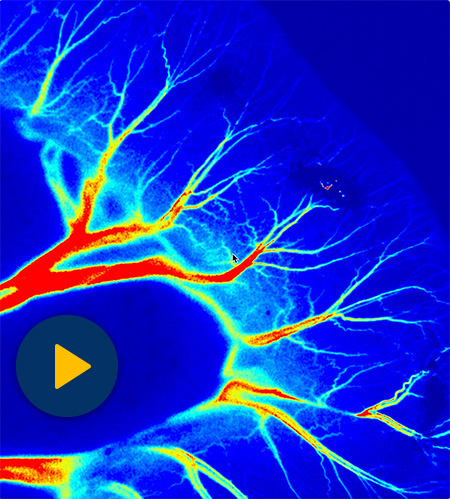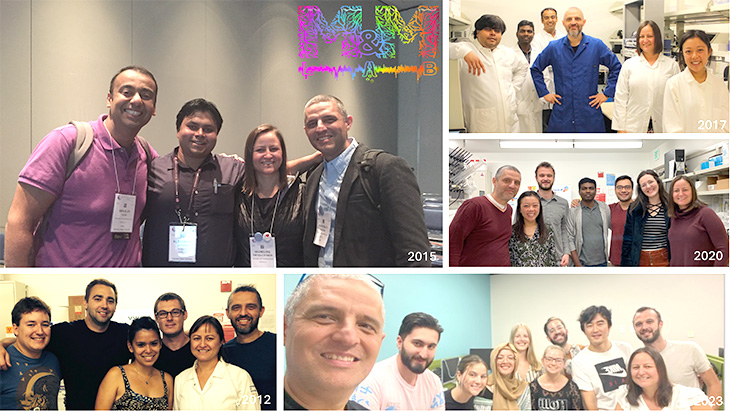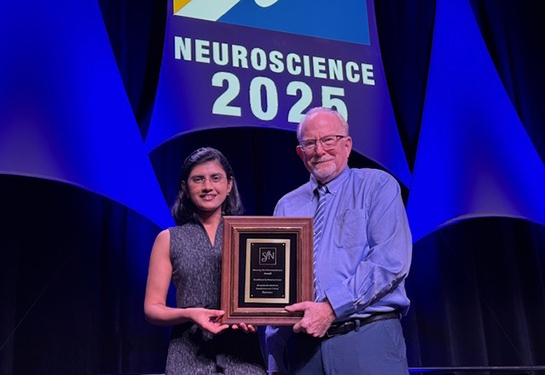UC Davis scientist earns national recognition for work in cardiovascular research
Award is a testament to Manuel Navedo’s dedication to innovative research, mentorship and service
The American Physiological Society recently named UC Davis Professor Manuel Navedo the 2025 recipient of the Robert M. Berne Distinguished Lectureship. This award is presented annually by the society’s Cardiovascular Section to an established leader in cardiovascular research.
Navedo is a professor in the Department of Pharmacology. He is an international thought leader with groundbreaking research on novel channel-signaling pathways in the vasculature (the circulatory system). These pathways are networks of proteins that transmit signals and initiate cellular responses.
“I am so happy and honored to receive this distinguished lectureship,” Navedo said. “I am also very grateful for the support of colleagues and mentors who nominated me for this award.”
Discovering new ion channel mechanisms in diabetes and hypertension
Navedo and his team at the M&M lab examine the function of ion channels under various conditions, such as diabetes, hypertension, Alzheimer's disease and heart failure. Ion channels are protein structures that act like tiny gates that open and close to regulate the ion movement across the cell membrane.
Navedo’s work has been recognized for its novelty and for uncovering new mechanisms. For example, he found a network of proteins that is activated during high blood sugar (diabetic hyperglycemia). These proteins would enhance the contraction of vascular smooth muscle cells, causing the artery to shrink in diameter. These changes may contribute to blood vessel dysfunction in people with diabetes.

Another discovery relates to L-type calcium (Ca+2) channels. Navedo’s studies provided evidence of tissue-specific regulation of these channels.
“The L-type Ca+2 channels are the proteins that help with your heart contraction. Every time your heart beats, those channels get activated. The activation of these channels also controls your blood vessels’ diameter and the flow going through them,” Navedo explained.
Navedo’s team and collaborators have found that the regulation of L-type Ca+2 channels in the vasculature and neurons is very different than in the heart.
More recently, they worked to uncover the dynamic nature of the L-type Ca+2 channels in the vasculature. When there is a stimulus, such as diabetes or hypertension, there's a rearrangement of these type of ion channels. The proteins tend to form bigger clusters.

In a new study, the team described the changes in the organization of these channels. They also looked at the mechanisms that control those changes and how they contribute to vascular dysfunction in hypertension.
“Targeting these mechanisms could prevent those protein changes. Hopefully, this work will become the foundation for new drugs to treat blood vessel complications in diabetes, hypertension and, perhaps, other conditions,” Navedo said.
Navedo is also very excited about a new collaboration that would look at heart failure with preserved ejection fraction (HFpEF), a condition in which the heart is not filling properly.
“Many of the changes that we saw in the spatial and temporal organization of L-type Ca+2 channels in hypertension and diabetes are also occurring in the animal model of HFpEF,” Navedo said. “We are using the knowledge gained with other diseases and new animal models of HFpEF to examine the impact of the disease in the vasculature.”
Puerto Rico and paying it forward
Navedo grew up in Puerto Rico. He studied at the University of Puerto Rico and graduated with a doctoral degree in neurobiology. He attributed his success in his field to his upbringing in the Puerto Rico countryside and his training as a Ph.D. student in Puerto Rico. Those life experiences shaped him as a scientist and a person.

“My formative years in Puerto Rico instilled in me a spirit of innovation and resilience," Navedo reflected. "The resourcefulness required to conduct high-level research with limited resources honed my problem-solving skills and fueled my passion for scientific discovery. These experiences continue to shape my approach to research and mentorship.”
Maintaining strong ties with his homeland, Navedo visits the University of Puerto Rico annually. His aim is to create opportunities for aspiring scientists from the island.
"One of my goals is to build bridges between Puerto Rico and mainland research institutions," he stated. "By facilitating research experiences for talented Puerto Rican students at UC Davis, we're enriching our scientific community and nurturing the next generation of diverse scientific leaders. The passion and unique perspectives these students bring are invaluable assets to our research endeavors."
Navedo is known as a committed and diligent mentor. He is also the chair of the Molecular, Cellular and Integrative Physiology Graduate Group.
“They know that I am invested in their success as well. I am thinking of them and of ways to help them achieve their goals,” he said.

The M&M Lab
Navedo shares the M&M Lab with his wife, Madeline Nieves-Cintron, an associate professor in pharmacology.
“The M&M stands for Manuel and Madelaine,” Navedo explained. “She helped me basically start the lab. Without her, of course, the story might be different. She's a big part of the success I have and part of this award as well.”
Nieves-Cintron started as a project scientist when Navedo joined UC Davis in 2012. She later developed her research program and got a faculty position at UC Davis. Now, they co-run the lab, supporting each other.
Navedo will present a lecture at the American Physiology Summit 2025 meeting held in Baltimore in April.




